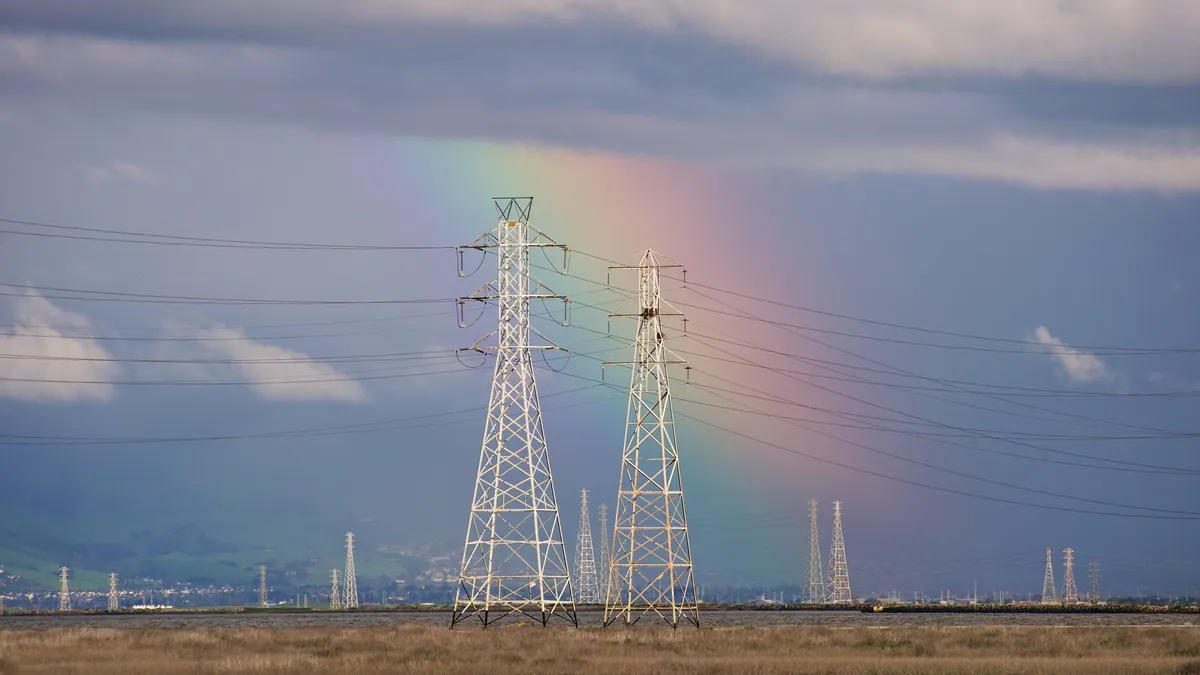Robin Allen is a climate fellow at the Niskanen Center.
Attempts to pass comprehensive transmission siting reform failed in the recent congressional debt ceiling negotiations. It may be time to explore a different approach to accelerating transmission build-out: encouraging voluntary efforts by developers and stakeholders to create stakeholder-driven transmission corridors. Under this model, identifying transmission routes is an exercise in strategically co-locating transmission with one or more other forms of “linear infrastructure” like broadband, prairie strips or bike trails. Developers would identify the specific route of new high-capacity transmission lines based on landowners' willingness to host transmission in exchange for access to valuable co-located infrastructure.
Given the robust desert Southwest solar resources and Great Plains wind resources, there is significant interest in building transmission from the former to the West and the latter to the East. The routes would mostly traverse rural areas, which often have unmet needs for broadband connectivity for telehealth, online learning and precision agriculture, among other uses.
To better understand the differences among the three types of broadband, consider this analogy to roads and highways: Backbone broadband is conceptually similar to interstate highways; middle-mile broadband can be compared with state and arterial highways; and last-mile broadband is akin to roads leading to residential areas.
Deficits in rural broadband are widely acknowledged, and several high-profile attempts have been made to alleviate them. For example, the Infrastructure Investment and Jobs Act of 2021 allocated $42B for its Broadband Equity Access and Deployment program, and the FCC has convened the Precision Agriculture Task Force. Broadband can be and is co-located with electric distribution and transmission lines.
Two factors help explain the “digital divide” that puts rural areas at a disadvantage. First, rural areas have low population density, which raises the per-household cost of connectivity. Second, below-average rural incomes often render broadband beyond the financial reach of many rural residents. Middle-mile broadband reduces the cost of providing last-mile access because it reduces the distance the last-mile provider needs to traverse to reach customers. When co-located with high-capacity transmission lines, it’s a crucial avenue for increasing rural broadband access.
These unmet rural connectivity needs may provide a nexus for building support for high-capacity transmission by letting rural middle-mile broadband demands drive the specific route of new high-capacity transmission. Several conditions make this siting strategy feasible:
- Transmission corridor designs can be flexible. For example, the Grain Belt Express, an 800-mile line planned across four Midwestern states, initially contemplated three routes — a northern route, a central route and a southern route. Based on stakeholder feedback, Clean Line, Grain Belt’s original developer, settled on the northern route. Also, when the Rock Island Clean Line, an Iowa-to-Illinois planned high-capacity transmission line, failed due to stakeholder opposition, a new Iowa-to-Illinois transmission line along a railway right of way, SOO Green, was proposed.
- Co-location of broadband with a high-capacity transmission line is feasible and inexpensive. Many rural electric utilities already co-locate broadband and power lines. The marginal cost is small, as the transmission line has already incurred the costs of acquiring easements, navigating most of the permitting process, purchasing the poles and mapping their placement.
- Online maps can facilitate the identification of potential willing landowners. Developers have opportunities to use data available now and forthcoming on areas underserved by broadband to identify landowners potentially willing to host co-located transmission lines. Over half of U.S. states have state broadband authorities; the FCC has a national broadband map and continuously works to improve its accuracy. In addition, a working group is collecting information for an advisory report to the FCC on a map that indicates which agricultural lands are unserved, underserved or served by broadband.
- Communities that have broadband might want redundancy. Adding broadband providers can significantly reduce consumers’ prices and the number and length of service outages.
A voluntary, stakeholder-driven approach pairing transmission and rural broadband connectivity needs can create incentives for landowners to welcome high-capacity transmission lines. An implicit assumption is that if middle-mile broadband traverses a farmer’s land, last-mile providers will provide the last-mile connection.
Certainly, building middle-mile broadband significantly reduces the cost of building last-mile connections. Contracts are one way to guarantee a landowner a last-mile connection. The high-capacity transmission developer could make contracts with providers to enable last-mile service to the landowners agreeing to host the high-capacity transmission line contingent on the line getting permitted.
The lack of new high-capacity transmission contributes to higher electric costs and lower reliability and is a barrier to the clean energy transition. In light of the recent setbacks to legislative solutions, voluntary strategies such as this one could benefit both transmission developers and stakeholders. This approach could help climate advocates and transmission opponents “meet in the middle” to design mutually advantageous infrastructure corridors.
Correction: We have updated this opinion piece to correct the name of the company that selected the route for the Grain Belt transmission line.














